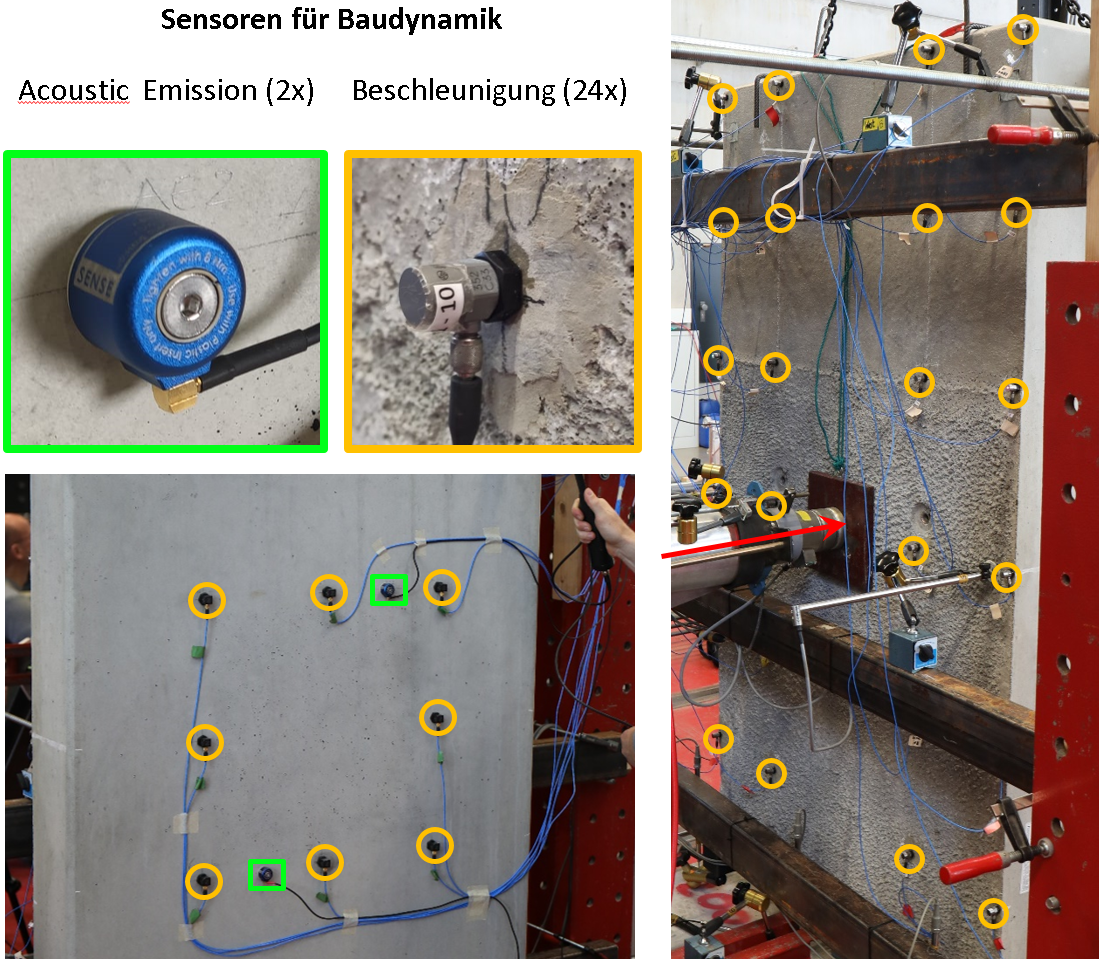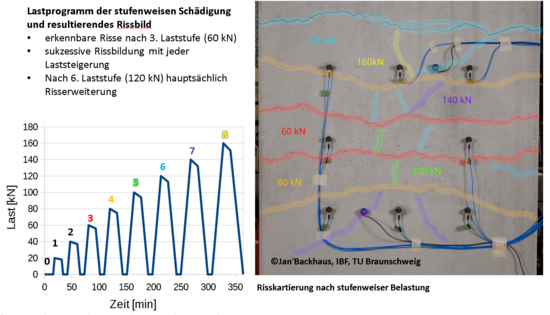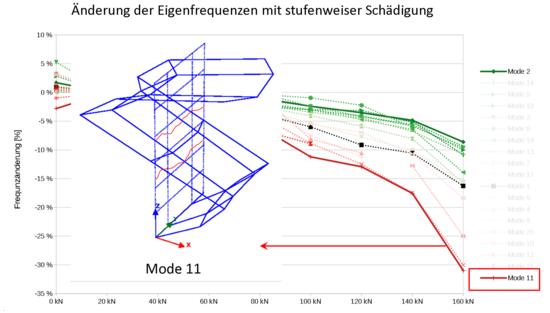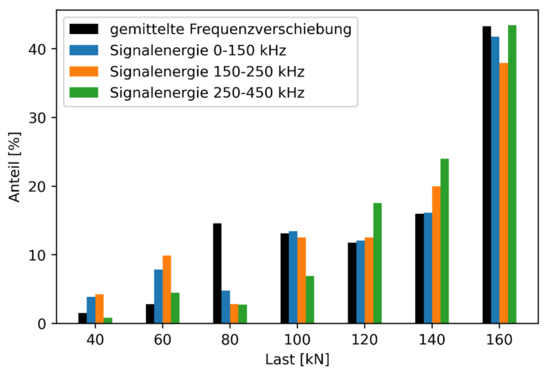Component tests at the Bauhaus-Universität Weimar show the potential of structural dynamics methods
The component tests carried out at the experimental facility of the Bauhaus-Universität Weimar with the participation of the TU Braunschweig (Institut für Flugführung and Institut für Geodäsie und Photogrammetrie) show the potential of structural dynamic investigations on built infrastructure.

Two acoustic emission (AE) sensors and a grid with 24 acceleration sensors were installed on a prefabricated element (Fig. 1) for later system validation. After an initial measurement, the component was loaded in stages (0...160 kN) in the center of the plate and thus successively damaged (Fig. 2). By comparing the modal parameters of the system identification (shift of the eigenfrequency of individual modes, Fig. 3), it was possible to detect and quantify the gradual damage and draw conclusions about the damage pattern. Analysing the acoustic emission signals made it possible to determine the accumulated crack energy and thus objectively assess the gradual damage. By correlating the results of both measurement systems, it can be shown (Fig. 4) that changes in the modal parameters clearly reflect the severity of the damage. This shows the potential of structural dynamic methods in damage detection and quantification, which are to be improved in further tests in order to allow conclusions to be drawn about the location and type of damage.





